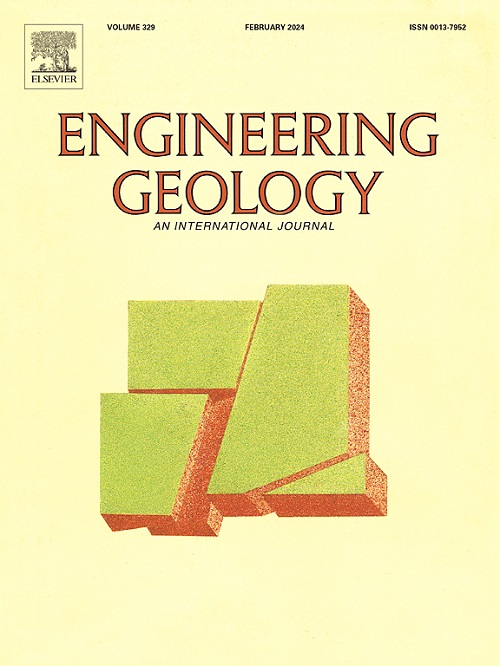Characterizing uncertainty and variability in shear wave velocity profiles from the Italian seismic microzonation studies
IF 6.9
1区 工程技术
Q1 ENGINEERING, GEOLOGICAL
引用次数: 0
Abstract
This study investigates the variability and uncertainty of shear wave velocity (Vs) with depth, focusing on the standard deviation of the natural logarithm of Vs (σlnVs) using a dataset of nearly 15,000 profiles from the Italian seismic microzonation studies. Seismic microzone clusters (SM), defined by geological and geophysical homogeneity, and geographical clusters (GC), based on survey density, were compared to evaluate their effectiveness in characterizing σlnVs variability.
Spatial correlation analyses were performed to define high-quality SM clusters, ensuring strong internal geological and geophysical consistency with a maximum pairwise distance of 4.5 km between Vs profiles. Results demonstrate that SM clusters reduce σlnVs uncertainty by 14 % within the first 30 m, 9 % from 30 to 50 m, and 4 % from 50 to 80 m compared to GC clusters, highlighting the value of geological and geophysical refinement. These results can support a more accurate randomization of Vs profiles with depth in local seismic response analyses using 1D simulation codes, improving the reliability of site-specific seismic hazard assessments. The findings are validated against literature uncertainty thresholds, confirming the robustness of the SM approach.
By analyzing 1120 SM clusters, this study offers a comprehensive framework for propagating uncertainties in seismic response simulations and surpasses the limitations of localized case studies.
The large dataset of Vs profiles, associated with SM clusters, is publicly available at https://doi.org/10.5281/zenodo.11263471 (Mori et al., 2024).
从意大利地震微带研究中表征剪切波速剖面的不确定性和可变性
本文利用意大利地震微带研究的近15000条剖面数据,研究了横波速度(Vs)随深度的变异性和不确定性,重点研究了Vs的自然对数(σlnVs)的标准差。对比了地质地球物理均匀性定义的地震微带聚类(SM)和基于调查密度的地理聚类(GC)在表征σlnVs变异方面的有效性。通过空间相关分析,确定了高质量的SM聚类,确保了内部地质和地球物理的一致性,v剖面之间的最大两两距离为4.5 km。结果表明,与GC聚类相比,SM聚类在前30 m范围内降低了14%的σlnVs不确定性,在30 ~ 50 m范围内降低了9%,在50 ~ 80 m范围内降低了4%,突出了地质和地球物理精化的价值。这些结果可以支持在使用一维模拟代码进行局部地震反应分析时更精确地随机化v剖面深度,从而提高特定地点地震危险性评估的可靠性。根据文献不确定性阈值验证了研究结果,证实了SM方法的稳健性。通过对1120个SM簇的分析,本研究为地震响应模拟中传播不确定性提供了一个全面的框架,并超越了局部案例研究的局限性。与SM集群相关的大型v配置文件数据集可在https://doi.org/10.5281/zenodo.11263471上公开获取(Mori等人,2024)。
本文章由计算机程序翻译,如有差异,请以英文原文为准。
求助全文
约1分钟内获得全文
求助全文
来源期刊

Engineering Geology
地学-地球科学综合
CiteScore
13.70
自引率
12.20%
发文量
327
审稿时长
5.6 months
期刊介绍:
Engineering Geology, an international interdisciplinary journal, serves as a bridge between earth sciences and engineering, focusing on geological and geotechnical engineering. It welcomes studies with relevance to engineering, environmental concerns, and safety, catering to engineering geologists with backgrounds in geology or civil/mining engineering. Topics include applied geomorphology, structural geology, geophysics, geochemistry, environmental geology, hydrogeology, land use planning, natural hazards, remote sensing, soil and rock mechanics, and applied geotechnical engineering. The journal provides a platform for research at the intersection of geology and engineering disciplines.
 求助内容:
求助内容: 应助结果提醒方式:
应助结果提醒方式:


